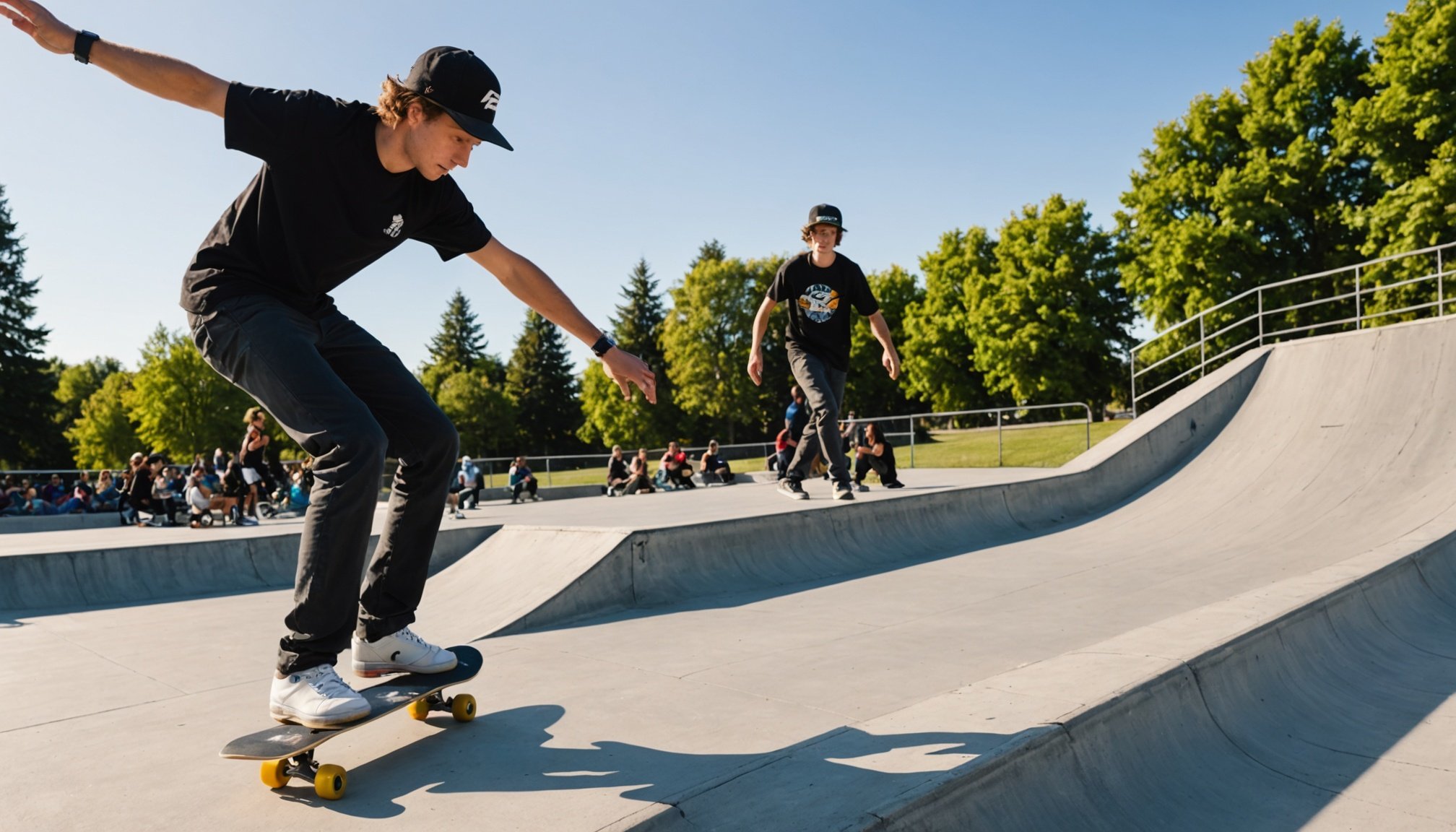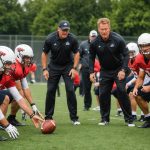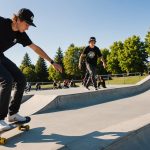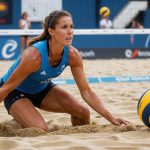Understanding the Importance of Balance in Skateboarding
Balance plays a crucial role in every facet of skateboarding, from executing advanced tricks to maintaining overall performance. Whether you’re a beginner or an experienced skater, mastering balance techniques is vital for both safety and skill enhancement. It influences not just stability but also agility and control over the skateboard.
In executing advanced tricks, balance is the key factor that separates success from failure. Tricks like the ollie or kickflip require a skater to maintain equilibrium while performing complex maneuvers. Without proper balance, the risk of falling increases, making it essential to develop solid balance skills early on. Advanced skills often build upon the fundamentals of balance, highlighting its importance in progressing as a skater.
To improve your balance, consider assessing your current abilities through simple exercises such as standing on one foot or practising on a balance board. These techniques can reveal areas for improvement, allowing you to tailor your practice effectively. Additionally, incorporating balance into your training routine can significantly enhance skateboarding fundamentals. Simple practices like shifting your weight smoothly or maintaining a low centre of gravity can make a substantial difference in your overall skateboarding technique. Improving balance can lead to more confident and controlled skateboarding, enabling skaters to perform advanced skills with precision and grace.
Essential Drills for Enhancing Balance
Improving your balance is crucial for skill development in skating, especially for those at intermediate and advanced stages. Incorporating specific balance drills into daily practice routines can lead to significant improvements.
Balance drills such as one-leg stands and T-pose holds are designed to challenge and enhance your stability. These exercises not only strengthen the core but also improve posture and maintain fluidity on the ice. For a more dynamic workout, try incorporating movement-based drills, like crossover lunges or zig-zag steps, which simulate real skating movements.
Moreover, using balance boards or stability tools can significantly boost training effectiveness. Balance boards, for instance, are excellent for engaging small muscle groups and improving motor skills. This is particularly beneficial because it mimics the unpredictable nature of skating surfaces, making practice more realistic.
Setting up a daily routine that includes these drills is key. Allocate a specific time for balance exercises, aligning them with your regular skating sessions. This incorporation not only makes it easier to track progress but also ensures consistency, which is essential for optimal results. Start with shorter sessions, gradually increasing intensity as your balance improves, to maintain motivation and gain confidence in your skills.
Advanced Techniques for Mastering Complex Tricks
Mastering skateboarding techniques requires an understanding of the mechanics behind each trick. Here, we break down popular tricks and offer insights on execution and trick mastery.
Ollies and Nollies
Ollies and nollies are foundational to many skateboarding tricks. Perfecting them involves mastering the jump mechanics and maintaining balance during execution. Key mechanics include snapping the tail against the ground and dragging the front foot upwards to level the board. To challenge your balance, try variations like switch stances or incorporating rotations.
Kickflips and Heelflips
The perfect kickflip or heelflip relies on a precise flick of the front foot. Trick execution can falter if you’re not flicking properly. Ensure the flick is crisp and directed off the edge, not downward. Common mistakes include losing board control mid-air; this can be avoided by keeping your shoulders aligned and maintaining focus on the board’s movement.
Grabs and Spins
Incorporating grabs into your tricks demands maintaining balance and control. Focus on keeping your weight centred while executing the grab. When it comes to spins, understanding the physics of rotation is crucial. Keep your head aligned with the spin direction to maintain stability and control, ensuring a smooth landing and successful trick.
Expert Insights and Tips from Professional Skateboarders
Navigating the world of skateboarding can be daunting, but gleaning wisdom from seasoned pros offers invaluable pointers for both beginners and veterans. Key insights revolve around maintaining balance during tricks, an area where many face challenges. Professional skateboarders suggest distributing weight evenly across the board and focusing on the core to enhance stability. This tactic not only promotes balance but also aids in executing tricks with precision.
In terms of mental preparation, experts stress the importance of maintaining focus. This mental clarity is essential for anticipating potential pitfalls and making precise movements. Veteran skaters often visualise their routines beforehand, allowing them to plan for each move and instil confidence. Cultivating this mindset can significantly improve one’s performance and resilience.
Real-life experiences from professional skateboarders provide relatable examples. Stories often highlight the trials faced during their journey, showcasing the significance of persistence and adaptation. Learning from these narratives can be motivating, revealing that even the most accomplished skaters have overcome challenges. They underscore the idea that mastering skateboarding is a marathon, not a sprint. Through persistence and learning from mistakes, both balance in tricks and mental readiness become second nature.
Utilizing Video and Visual Techniques for Skill Improvement
Visual learning and demonstration techniques can significantly enhance the learning process, especially for mastering advanced tricks. Video tutorials serve as beneficial resources that provide a step-by-step guide to various techniques. They allow learners to observe movements and timing closely, offering a visual representation of what they need to achieve.
For novice or seasoned skateboarders, visual aids play a crucial role in skill enhancement. They provide clarity on complex maneuvers that may be difficult to grasp through verbal instructions alone. Moreover, recommended video tutorials can help learners visualise the correct form and align their practice accordingly.
Furthermore, analysing your skateboarding via video can be an invaluable practice. Recording sessions allows you to study your performance, identify areas for improvement, and track progress over time. By reviewing these videos, skateboarders can refine their techniques and correct mistakes that might not be apparent during live practice.
To get the most out of these techniques, select high-quality video tutorials from trusted sources. Focus on those that break down tricks into manageable segments, making it easier to follow and replicate them accurately. This approach ensures a comprehensive understanding and boosts the ability to execute advanced tricks with precision and confidence.
Developing a Personalized Training Regimen
Creating a training schedule that balances various activities is crucial for effective skill progression. A well-structured plan allows you to incorporate both balance and trick practice, ensuring a comprehensive approach. While it’s tempting to focus solely on trick practice, attention to balance can significantly enhance overall performance. A personalized coaching approach can help tailor your regimen to meet specific needs, providing targeted instruction that accelerates skill acquisition.
Tracking your progress is vital. By setting measurable goals, you can visibly mark your improvement over time. Consider creating a checklist or journal to document each achievement. Remember, progression isn’t solely about mastering new tricks but also refining existing skills. This methodical tracking can illuminate areas that require additional focus and adjustment in your training schedule.
Equally important is the role of rest and recovery in skill development. Fatigue can hinder performance and increase the risk of injury. Incorporating rest days into your schedule allows your body to recuperate, which is just as crucial as the active training periods. Personalized coaching can guide you in recognising when to pause and how to optimise recovery, integrating self-care effectively into your training. Proper rest not only sustains physical health but also supports mental well-being, maintaining enthusiasm and drive.











